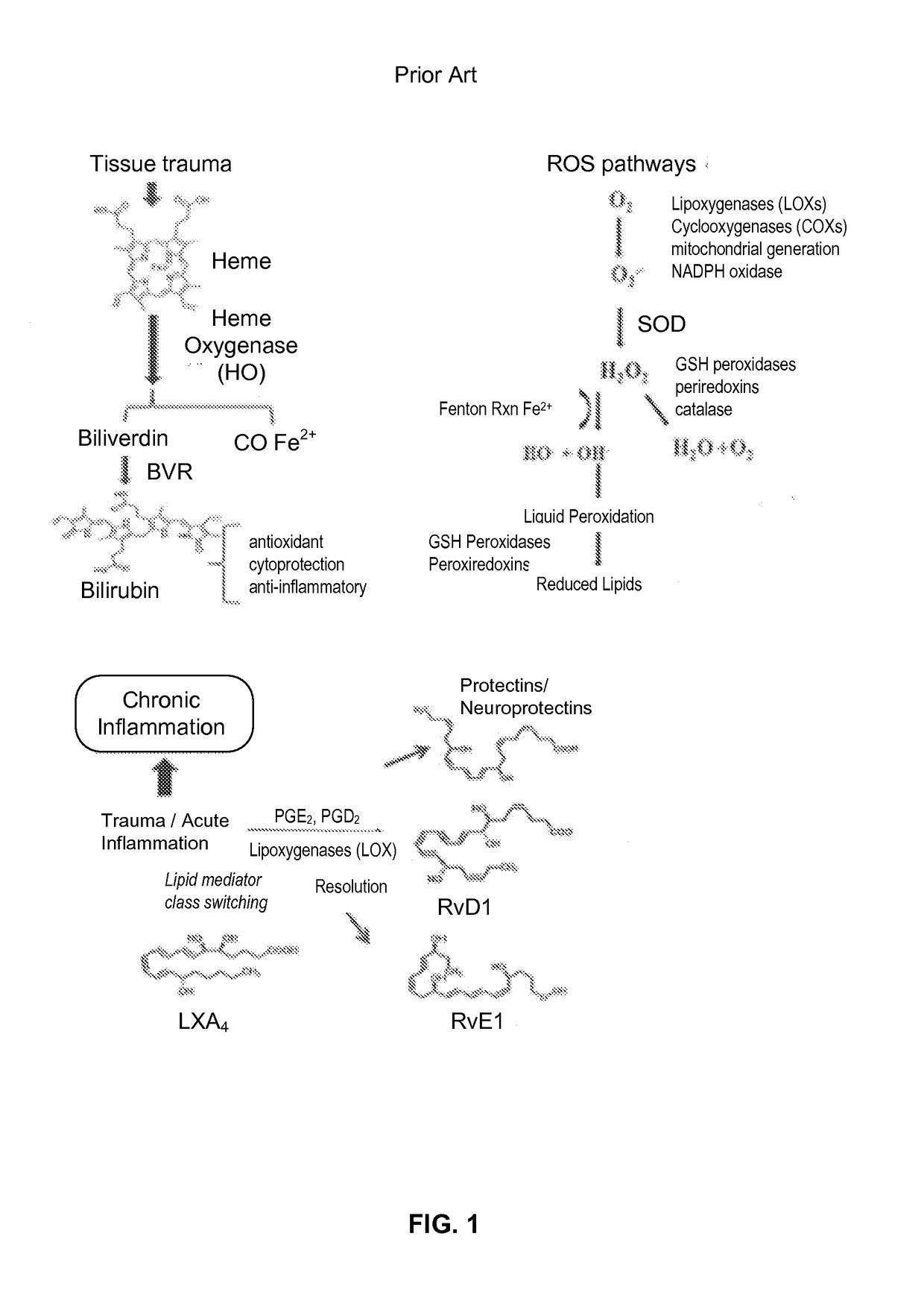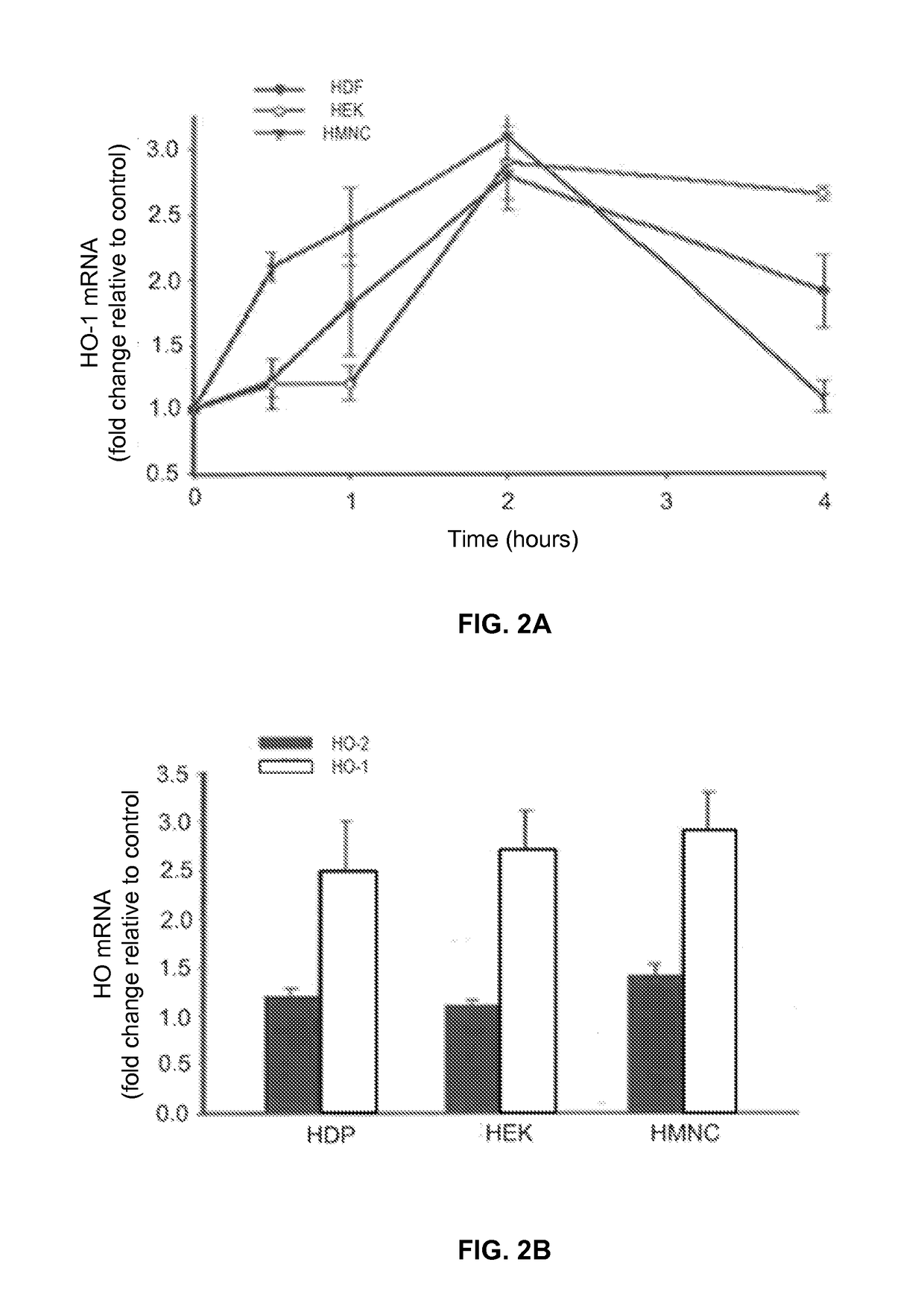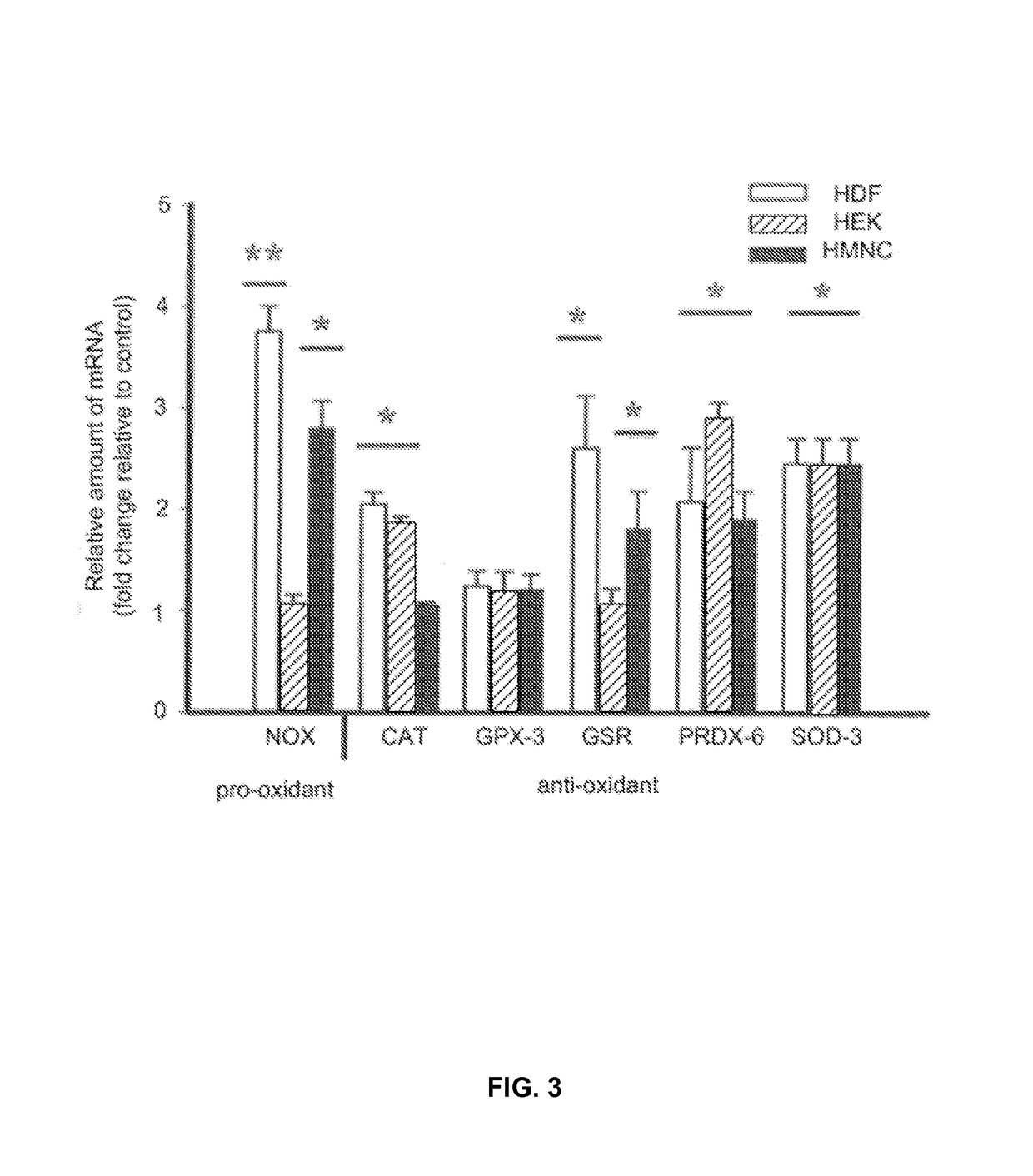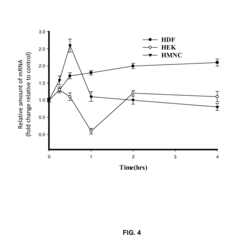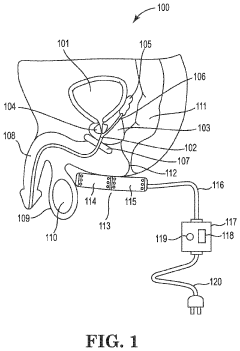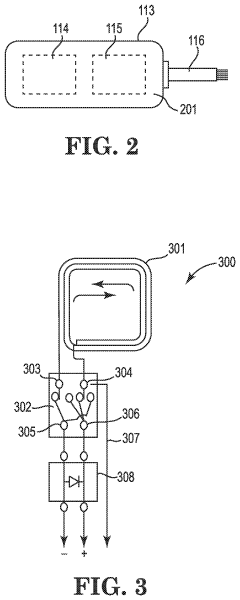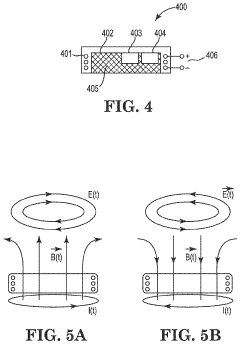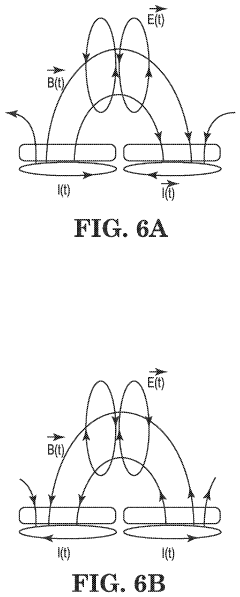How PEMF Therapy Aids in Chronic Pain Management?
AUG 11, 20258 MIN READ
Generate Your Research Report Instantly with AI Agent
Patsnap Eureka helps you evaluate technical feasibility & market potential.
PEMF Therapy Background and Objectives
Pulsed Electromagnetic Field (PEMF) therapy has emerged as a promising non-invasive treatment for chronic pain management. This technology harnesses the power of electromagnetic fields to stimulate cellular repair and reduce inflammation, offering a potential alternative or complement to traditional pain management approaches.
The development of PEMF therapy can be traced back to the mid-20th century, with early applications in bone healing. Over the decades, researchers have expanded its use to address various chronic pain conditions, including osteoarthritis, fibromyalgia, and lower back pain. The evolution of PEMF technology has been driven by advancements in electromagnetic field generation and a deeper understanding of its biological effects on human tissues.
Recent years have seen a surge in interest in PEMF therapy, fueled by an increasing body of scientific evidence supporting its efficacy in pain reduction and improved functionality. This growing interest is further propelled by the global need for effective, non-pharmacological pain management solutions, especially in light of the opioid crisis and the limitations of long-term medication use.
The primary objective of PEMF therapy in chronic pain management is to alleviate pain symptoms, improve quality of life, and enhance overall physical function. By modulating pain signaling pathways and promoting tissue repair at the cellular level, PEMF therapy aims to address the root causes of chronic pain rather than merely masking symptoms.
Another key goal is to reduce reliance on pain medications, particularly opioids, which carry significant risks of addiction and side effects. PEMF therapy offers a drug-free approach that can potentially decrease the need for pharmacological interventions or enhance their effectiveness when used in combination.
Furthermore, PEMF therapy seeks to provide a versatile treatment option that can be tailored to various chronic pain conditions and individual patient needs. Its non-invasive nature and relatively low risk of side effects make it an attractive option for long-term pain management strategies.
As research in this field progresses, there is a growing focus on optimizing PEMF parameters, such as frequency, intensity, and duration, to maximize therapeutic benefits for specific pain conditions. Additionally, efforts are being made to develop more portable and user-friendly PEMF devices, enabling broader access to this technology in both clinical and home settings.
The future trajectory of PEMF therapy in chronic pain management aims to establish it as a mainstream treatment option, supported by robust clinical evidence and integrated into comprehensive pain management protocols. This includes exploring its potential synergies with other therapies and investigating its long-term effects on pain reduction and overall health outcomes.
The development of PEMF therapy can be traced back to the mid-20th century, with early applications in bone healing. Over the decades, researchers have expanded its use to address various chronic pain conditions, including osteoarthritis, fibromyalgia, and lower back pain. The evolution of PEMF technology has been driven by advancements in electromagnetic field generation and a deeper understanding of its biological effects on human tissues.
Recent years have seen a surge in interest in PEMF therapy, fueled by an increasing body of scientific evidence supporting its efficacy in pain reduction and improved functionality. This growing interest is further propelled by the global need for effective, non-pharmacological pain management solutions, especially in light of the opioid crisis and the limitations of long-term medication use.
The primary objective of PEMF therapy in chronic pain management is to alleviate pain symptoms, improve quality of life, and enhance overall physical function. By modulating pain signaling pathways and promoting tissue repair at the cellular level, PEMF therapy aims to address the root causes of chronic pain rather than merely masking symptoms.
Another key goal is to reduce reliance on pain medications, particularly opioids, which carry significant risks of addiction and side effects. PEMF therapy offers a drug-free approach that can potentially decrease the need for pharmacological interventions or enhance their effectiveness when used in combination.
Furthermore, PEMF therapy seeks to provide a versatile treatment option that can be tailored to various chronic pain conditions and individual patient needs. Its non-invasive nature and relatively low risk of side effects make it an attractive option for long-term pain management strategies.
As research in this field progresses, there is a growing focus on optimizing PEMF parameters, such as frequency, intensity, and duration, to maximize therapeutic benefits for specific pain conditions. Additionally, efforts are being made to develop more portable and user-friendly PEMF devices, enabling broader access to this technology in both clinical and home settings.
The future trajectory of PEMF therapy in chronic pain management aims to establish it as a mainstream treatment option, supported by robust clinical evidence and integrated into comprehensive pain management protocols. This includes exploring its potential synergies with other therapies and investigating its long-term effects on pain reduction and overall health outcomes.
Market Analysis for PEMF in Pain Management
The PEMF (Pulsed Electromagnetic Field) therapy market for chronic pain management has shown significant growth potential in recent years. As the global population ages and the prevalence of chronic pain conditions increases, there is a growing demand for non-invasive and drug-free pain management solutions. PEMF therapy has emerged as a promising alternative, attracting attention from both healthcare providers and patients.
The market for PEMF devices in pain management is expected to experience substantial growth over the next decade. This growth is driven by several factors, including the rising incidence of chronic pain conditions, increasing awareness of the therapy's benefits, and advancements in PEMF technology. The market is segmented into various applications, with chronic pain management being one of the largest and fastest-growing segments.
North America currently dominates the PEMF therapy market, followed by Europe and Asia-Pacific. The United States, in particular, represents a significant market share due to its high healthcare expenditure and early adoption of innovative medical technologies. However, emerging economies in Asia and Latin America are expected to witness rapid growth in the coming years, driven by improving healthcare infrastructure and rising disposable incomes.
The target consumer base for PEMF therapy in pain management is diverse, including individuals suffering from conditions such as arthritis, fibromyalgia, back pain, and sports-related injuries. Additionally, there is growing interest from healthcare facilities, rehabilitation centers, and sports medicine clinics in incorporating PEMF therapy into their treatment protocols.
One of the key market trends is the development of portable and user-friendly PEMF devices for home use. This trend has been accelerated by the COVID-19 pandemic, which has increased demand for at-home healthcare solutions. Manufacturers are focusing on creating compact, easy-to-use devices that allow patients to receive treatment without frequent visits to healthcare facilities.
The competitive landscape of the PEMF therapy market is characterized by a mix of established medical device companies and innovative startups. Key players are investing heavily in research and development to improve the efficacy of PEMF devices and expand their applications in pain management. Strategic partnerships between device manufacturers and healthcare providers are becoming increasingly common, aiming to enhance market penetration and improve patient access to PEMF therapy.
Despite the promising growth prospects, the PEMF therapy market faces challenges such as limited insurance coverage and the need for more extensive clinical evidence to support its efficacy in pain management. Overcoming these barriers will be crucial for the widespread adoption of PEMF therapy and the realization of its full market potential in chronic pain management.
The market for PEMF devices in pain management is expected to experience substantial growth over the next decade. This growth is driven by several factors, including the rising incidence of chronic pain conditions, increasing awareness of the therapy's benefits, and advancements in PEMF technology. The market is segmented into various applications, with chronic pain management being one of the largest and fastest-growing segments.
North America currently dominates the PEMF therapy market, followed by Europe and Asia-Pacific. The United States, in particular, represents a significant market share due to its high healthcare expenditure and early adoption of innovative medical technologies. However, emerging economies in Asia and Latin America are expected to witness rapid growth in the coming years, driven by improving healthcare infrastructure and rising disposable incomes.
The target consumer base for PEMF therapy in pain management is diverse, including individuals suffering from conditions such as arthritis, fibromyalgia, back pain, and sports-related injuries. Additionally, there is growing interest from healthcare facilities, rehabilitation centers, and sports medicine clinics in incorporating PEMF therapy into their treatment protocols.
One of the key market trends is the development of portable and user-friendly PEMF devices for home use. This trend has been accelerated by the COVID-19 pandemic, which has increased demand for at-home healthcare solutions. Manufacturers are focusing on creating compact, easy-to-use devices that allow patients to receive treatment without frequent visits to healthcare facilities.
The competitive landscape of the PEMF therapy market is characterized by a mix of established medical device companies and innovative startups. Key players are investing heavily in research and development to improve the efficacy of PEMF devices and expand their applications in pain management. Strategic partnerships between device manufacturers and healthcare providers are becoming increasingly common, aiming to enhance market penetration and improve patient access to PEMF therapy.
Despite the promising growth prospects, the PEMF therapy market faces challenges such as limited insurance coverage and the need for more extensive clinical evidence to support its efficacy in pain management. Overcoming these barriers will be crucial for the widespread adoption of PEMF therapy and the realization of its full market potential in chronic pain management.
Current PEMF Technology and Challenges
Pulsed Electromagnetic Field (PEMF) therapy has gained significant attention in recent years as a non-invasive treatment for chronic pain management. The current state of PEMF technology showcases a range of devices and applications, from portable home-use units to clinical-grade systems. These devices generate low-frequency electromagnetic fields that penetrate the body, stimulating cellular repair and reducing inflammation.
One of the primary challenges in PEMF technology is optimizing the frequency and intensity of the electromagnetic fields for different types of chronic pain conditions. Research has shown that different frequencies may be more effective for specific ailments, but there is still a lack of standardization across the industry. This variability in treatment protocols can lead to inconsistent results and challenges in comparing efficacy across studies.
Another significant challenge lies in the miniaturization and portability of PEMF devices. While there have been advancements in creating smaller, more user-friendly units for home use, balancing power output with device size remains an ongoing issue. Engineers are working to develop more efficient coil designs and power management systems to address this challenge.
The integration of PEMF technology with other pain management modalities presents both opportunities and challenges. Combining PEMF with traditional pharmacological treatments or other non-invasive therapies like transcutaneous electrical nerve stimulation (TENS) could potentially enhance overall pain relief. However, determining the optimal combination and timing of these therapies requires extensive research and clinical trials.
Regulatory challenges also play a significant role in the development and adoption of PEMF technology. While some PEMF devices have received FDA clearance for specific conditions, the regulatory landscape for emerging applications in chronic pain management is still evolving. Manufacturers must navigate complex approval processes and provide substantial clinical evidence to support new indications.
The long-term effects of PEMF therapy on chronic pain management are not yet fully understood, presenting another challenge for researchers and clinicians. While short-term studies have shown promising results, more longitudinal research is needed to assess the sustained benefits and potential side effects of prolonged PEMF use.
Lastly, the cost of advanced PEMF systems remains a barrier to widespread adoption, particularly in clinical settings. Developing more cost-effective solutions without compromising on therapeutic efficacy is a key focus for manufacturers and researchers in the field.
One of the primary challenges in PEMF technology is optimizing the frequency and intensity of the electromagnetic fields for different types of chronic pain conditions. Research has shown that different frequencies may be more effective for specific ailments, but there is still a lack of standardization across the industry. This variability in treatment protocols can lead to inconsistent results and challenges in comparing efficacy across studies.
Another significant challenge lies in the miniaturization and portability of PEMF devices. While there have been advancements in creating smaller, more user-friendly units for home use, balancing power output with device size remains an ongoing issue. Engineers are working to develop more efficient coil designs and power management systems to address this challenge.
The integration of PEMF technology with other pain management modalities presents both opportunities and challenges. Combining PEMF with traditional pharmacological treatments or other non-invasive therapies like transcutaneous electrical nerve stimulation (TENS) could potentially enhance overall pain relief. However, determining the optimal combination and timing of these therapies requires extensive research and clinical trials.
Regulatory challenges also play a significant role in the development and adoption of PEMF technology. While some PEMF devices have received FDA clearance for specific conditions, the regulatory landscape for emerging applications in chronic pain management is still evolving. Manufacturers must navigate complex approval processes and provide substantial clinical evidence to support new indications.
The long-term effects of PEMF therapy on chronic pain management are not yet fully understood, presenting another challenge for researchers and clinicians. While short-term studies have shown promising results, more longitudinal research is needed to assess the sustained benefits and potential side effects of prolonged PEMF use.
Lastly, the cost of advanced PEMF systems remains a barrier to widespread adoption, particularly in clinical settings. Developing more cost-effective solutions without compromising on therapeutic efficacy is a key focus for manufacturers and researchers in the field.
Current PEMF Solutions for Chronic Pain
01 PEMF devices for pain management
Pulsed Electromagnetic Field (PEMF) therapy devices are designed specifically for pain management. These devices generate electromagnetic fields that penetrate the body, potentially reducing pain and inflammation. They can be used for various types of pain, including chronic and acute conditions.- PEMF devices for pain management: Pulsed Electromagnetic Field (PEMF) therapy devices are designed specifically for pain management. These devices generate electromagnetic fields that penetrate the body, stimulating cellular activity and promoting healing. They can be used to treat various types of pain, including chronic pain, musculoskeletal pain, and post-operative pain.
- Wearable PEMF devices for targeted pain relief: Wearable PEMF devices allow for targeted and continuous pain relief. These devices can be worn on specific body parts, providing localized electromagnetic therapy. They are designed for ease of use and mobility, allowing patients to receive treatment while going about their daily activities.
- PEMF therapy combined with other treatment modalities: PEMF therapy can be combined with other treatment modalities to enhance pain management. This may include integration with physical therapy, medication, or other forms of electromagnetic stimulation. The combination approach aims to provide more comprehensive and effective pain relief.
- Customizable PEMF treatment protocols: Advanced PEMF devices offer customizable treatment protocols for pain management. These systems allow healthcare providers to adjust parameters such as frequency, intensity, and duration of electromagnetic pulses based on the patient's specific condition and response to treatment. This personalized approach aims to optimize pain relief outcomes.
- PEMF therapy for specific pain conditions: PEMF therapy is being developed and applied to target specific pain conditions. This includes applications for neuropathic pain, arthritis-related pain, fibromyalgia, and post-traumatic pain. Research is ongoing to determine the most effective PEMF parameters and treatment protocols for each specific pain condition.
02 Wearable PEMF devices for targeted therapy
Wearable PEMF devices allow for targeted and continuous therapy. These devices can be worn on specific body parts, providing localized pain relief. They are designed for ease of use and mobility, allowing patients to receive treatment while going about their daily activities.Expand Specific Solutions03 Combination of PEMF with other therapies
PEMF therapy can be combined with other treatment modalities for enhanced pain management. This may include integration with heat therapy, electrical stimulation, or other complementary treatments to provide a more comprehensive approach to pain relief.Expand Specific Solutions04 Customizable PEMF treatment protocols
Advanced PEMF devices offer customizable treatment protocols. These systems allow for adjustments in frequency, intensity, and duration of the electromagnetic pulses, tailoring the therapy to individual patient needs and specific pain conditions.Expand Specific Solutions05 PEMF therapy for post-operative pain management
PEMF therapy is being utilized for post-operative pain management. This application of PEMF can help reduce the need for pain medications, potentially speeding up recovery times and improving patient outcomes after surgical procedures.Expand Specific Solutions
Key Players in PEMF Industry
The PEMF therapy market for chronic pain management is in a growth phase, driven by increasing demand for non-invasive treatments. The global market size is expanding, with projections indicating significant growth in the coming years. Technologically, PEMF therapy is advancing, with companies like Regenesis Biomedical and SofPulse leading innovation. Regenesis Biomedical's Provant Therapy System and SofPulse's devices demonstrate the technology's maturity and efficacy. Research institutions such as the National University of Singapore and Swiss Federal Institute of Technology are contributing to the field's development, enhancing the scientific understanding and potential applications of PEMF therapy in chronic pain management.
Regenesis Biomedical, Inc.
Technical Solution: Regenesis Biomedical has developed a proprietary PEMF therapy system called Provant Therapy System. This device utilizes a specific pulsed electromagnetic field to stimulate cellular repair and reduce pain. The system operates at a frequency of 27.12 MHz, which has been shown to effectively penetrate tissue and promote healing[1]. Provant Therapy is designed for easy home use, allowing patients to receive consistent treatment for chronic pain management. The device delivers non-invasive, drug-free therapy sessions lasting 30 minutes, twice daily[2]. Clinical studies have demonstrated its efficacy in reducing pain and improving functionality in conditions such as osteoarthritis and post-operative pain[3].
Strengths: FDA-cleared, non-invasive, drug-free solution; portable for home use; clinically proven efficacy. Weaknesses: Limited to specific frequency; may require consistent long-term use for optimal results.
SofPulse, Inc.
Technical Solution: SofPulse has developed a wearable PEMF therapy device specifically designed for chronic pain management. The SofPulse system utilizes a proprietary Targeted PEMF (tPEMF) technology that delivers low-intensity, pulsed electromagnetic fields to the affected area. The device operates at a frequency range of 1-50 Hz, which has been shown to be effective in reducing inflammation and promoting tissue repair[4]. SofPulse's technology is based on the principle of enhancing the body's natural healing processes by stimulating cellular activity. The device is compact and can be worn discreetly under clothing, allowing for continuous treatment throughout the day. Clinical studies have demonstrated significant pain reduction and improved mobility in patients with chronic conditions such as osteoarthritis and lower back pain[5].
Strengths: Wearable and portable design for continuous treatment; low-intensity fields suitable for long-term use; clinically proven for various chronic pain conditions. Weaknesses: May require consistent long-term use; effectiveness may vary depending on the specific pain condition.
Core PEMF Innovations for Pain Relief
Treatment of conditions susceptible to pulsed electromagnetic field therapy
PatentActiveUS20170354830A1
Innovation
- PEMF therapy is administered to modulate gene expression associated with inflammation pathways, including heme oxygenase, antioxidant enzymes, lipid mediator biosynthesis, and cytokines, using specific parameters such as electric field strength, pulse rate, and duration to produce measurable clinical effects on pain, nerve function, and wound healing.
Method and apparatus for treatment of benign prostatic hyperplasia (BPH)
PatentInactiveUS20230398368A1
Innovation
- A non-invasive method utilizing pulsed electromagnetic field (PEMF) stimulation to increase the number of A2a receptors on cell membranes, enhancing the anti-inflammatory effects of adenosine and providing immunosuppressive action to reduce chronic inflammation and tissue damage in the prostate.
Clinical Efficacy and Safety Studies
Numerous clinical studies have been conducted to evaluate the efficacy and safety of Pulsed Electromagnetic Field (PEMF) therapy in chronic pain management. These studies have consistently demonstrated positive outcomes, with PEMF therapy showing significant potential in alleviating various types of chronic pain conditions.
A systematic review of randomized controlled trials published in the Journal of Pain Research found that PEMF therapy effectively reduced pain intensity and improved functional outcomes in patients with chronic musculoskeletal pain. The review analyzed 16 studies involving over 2,000 participants, reporting a moderate to large effect size in pain reduction compared to placebo or standard care.
One notable study published in the Journal of Orthopaedic Surgery and Research focused on PEMF therapy for osteoarthritis-related knee pain. The double-blind, placebo-controlled trial involving 60 patients showed a significant reduction in pain scores and improved physical function after 12 weeks of treatment. Importantly, no serious adverse events were reported, highlighting the safety profile of PEMF therapy.
Another randomized controlled trial, published in Pain Research and Management, investigated the efficacy of PEMF therapy in chronic low back pain. The study, involving 97 patients, reported a significant decrease in pain intensity and an improvement in quality of life measures after eight weeks of treatment. The researchers noted that the effects were sustained during a three-month follow-up period.
Safety studies have consistently shown that PEMF therapy is well-tolerated with minimal side effects. A comprehensive safety review published in the International Journal of Environmental Research and Public Health analyzed data from over 50 clinical trials and found no significant adverse events associated with PEMF therapy. Minor side effects, such as temporary mild discomfort or tingling sensations, were reported in a small percentage of patients but were generally transient and resolved without intervention.
The long-term safety of PEMF therapy has also been evaluated in several studies. A five-year follow-up study published in the Journal of Bone and Joint Surgery found no increased risk of cancer or other serious health conditions in patients who received long-term PEMF therapy for non-union fractures. This study provides reassurance regarding the long-term safety profile of PEMF therapy, particularly for chronic pain management applications.
A systematic review of randomized controlled trials published in the Journal of Pain Research found that PEMF therapy effectively reduced pain intensity and improved functional outcomes in patients with chronic musculoskeletal pain. The review analyzed 16 studies involving over 2,000 participants, reporting a moderate to large effect size in pain reduction compared to placebo or standard care.
One notable study published in the Journal of Orthopaedic Surgery and Research focused on PEMF therapy for osteoarthritis-related knee pain. The double-blind, placebo-controlled trial involving 60 patients showed a significant reduction in pain scores and improved physical function after 12 weeks of treatment. Importantly, no serious adverse events were reported, highlighting the safety profile of PEMF therapy.
Another randomized controlled trial, published in Pain Research and Management, investigated the efficacy of PEMF therapy in chronic low back pain. The study, involving 97 patients, reported a significant decrease in pain intensity and an improvement in quality of life measures after eight weeks of treatment. The researchers noted that the effects were sustained during a three-month follow-up period.
Safety studies have consistently shown that PEMF therapy is well-tolerated with minimal side effects. A comprehensive safety review published in the International Journal of Environmental Research and Public Health analyzed data from over 50 clinical trials and found no significant adverse events associated with PEMF therapy. Minor side effects, such as temporary mild discomfort or tingling sensations, were reported in a small percentage of patients but were generally transient and resolved without intervention.
The long-term safety of PEMF therapy has also been evaluated in several studies. A five-year follow-up study published in the Journal of Bone and Joint Surgery found no increased risk of cancer or other serious health conditions in patients who received long-term PEMF therapy for non-union fractures. This study provides reassurance regarding the long-term safety profile of PEMF therapy, particularly for chronic pain management applications.
Regulatory Framework for PEMF Devices
The regulatory framework for PEMF (Pulsed Electromagnetic Field) devices plays a crucial role in ensuring the safety and efficacy of these devices in chronic pain management. In the United States, the Food and Drug Administration (FDA) is the primary regulatory body overseeing PEMF devices. These devices are generally classified as Class II medical devices, requiring premarket notification (510(k)) before they can be legally marketed.
The FDA's regulatory approach to PEMF devices is based on their intended use and the level of risk associated with their application. For chronic pain management, PEMF devices must demonstrate substantial equivalence to predicate devices already on the market. This process involves submitting detailed technical documentation, including clinical data supporting the device's safety and effectiveness in pain management.
In the European Union, PEMF devices fall under the Medical Device Regulation (MDR). Manufacturers must obtain CE marking by demonstrating compliance with the MDR's essential requirements. This includes conducting clinical evaluations and risk assessments to prove the device's safety and performance in chronic pain management applications.
Japan's Pharmaceuticals and Medical Devices Agency (PMDA) regulates PEMF devices under the Pharmaceutical and Medical Device Act. The approval process involves submitting comprehensive technical documentation and clinical data to support the device's safety and efficacy in pain management.
Regulatory bodies worldwide are increasingly focusing on post-market surveillance of PEMF devices. Manufacturers are required to implement robust quality management systems and report adverse events related to device use. This ongoing monitoring helps ensure the continued safety and effectiveness of PEMF devices in chronic pain management.
As the field of PEMF therapy evolves, regulatory frameworks are adapting to address emerging technologies and applications. For instance, there is growing interest in wearable PEMF devices for chronic pain management, which may require specific regulatory considerations due to their prolonged contact with the body.
International harmonization efforts, such as the Medical Device Single Audit Program (MDSAP), are streamlining regulatory processes across multiple jurisdictions. This initiative aims to reduce regulatory burdens while maintaining high standards of safety and efficacy for PEMF devices used in chronic pain management.
The FDA's regulatory approach to PEMF devices is based on their intended use and the level of risk associated with their application. For chronic pain management, PEMF devices must demonstrate substantial equivalence to predicate devices already on the market. This process involves submitting detailed technical documentation, including clinical data supporting the device's safety and effectiveness in pain management.
In the European Union, PEMF devices fall under the Medical Device Regulation (MDR). Manufacturers must obtain CE marking by demonstrating compliance with the MDR's essential requirements. This includes conducting clinical evaluations and risk assessments to prove the device's safety and performance in chronic pain management applications.
Japan's Pharmaceuticals and Medical Devices Agency (PMDA) regulates PEMF devices under the Pharmaceutical and Medical Device Act. The approval process involves submitting comprehensive technical documentation and clinical data to support the device's safety and efficacy in pain management.
Regulatory bodies worldwide are increasingly focusing on post-market surveillance of PEMF devices. Manufacturers are required to implement robust quality management systems and report adverse events related to device use. This ongoing monitoring helps ensure the continued safety and effectiveness of PEMF devices in chronic pain management.
As the field of PEMF therapy evolves, regulatory frameworks are adapting to address emerging technologies and applications. For instance, there is growing interest in wearable PEMF devices for chronic pain management, which may require specific regulatory considerations due to their prolonged contact with the body.
International harmonization efforts, such as the Medical Device Single Audit Program (MDSAP), are streamlining regulatory processes across multiple jurisdictions. This initiative aims to reduce regulatory burdens while maintaining high standards of safety and efficacy for PEMF devices used in chronic pain management.
Unlock deeper insights with Patsnap Eureka Quick Research — get a full tech report to explore trends and direct your research. Try now!
Generate Your Research Report Instantly with AI Agent
Supercharge your innovation with Patsnap Eureka AI Agent Platform!
